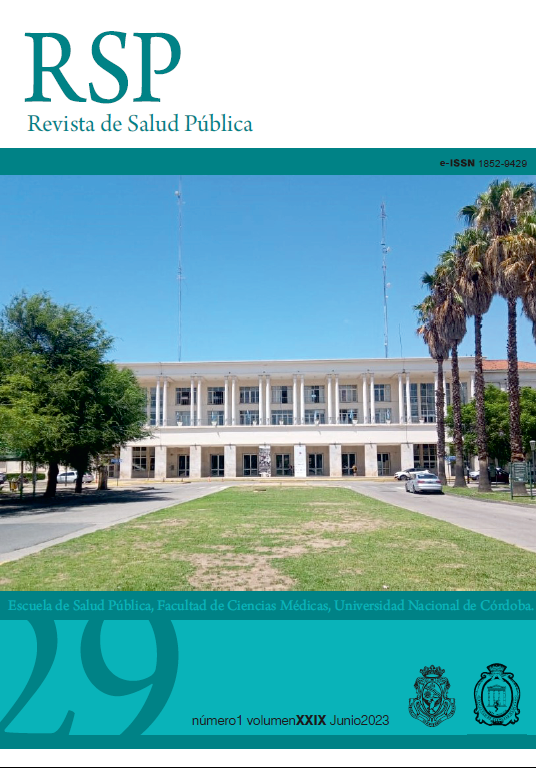Calculation of fire risk and firefighting inside community pharmacies. Gustav Purt’s method
DOI:
https://doi.org/10.31052/1853.1180.v29.n1.36453Keywords:
fuel, fire, heat, smoke, pharmacyAbstract
Fire is a chemical combustion reaction based on strongly exothermic oxidation-reduction phenomena that result in the emission of a significant amount of light and heat. Its effects are generally detrimental, causing harm to individuals through smoke inhalation, exposure to toxic gases, and extreme temperatures. Fires also cause extensive damage to infrastructure and property. A fire occurs when three factors are present simultaneously in the same location and at the same time: fuel, an oxidizing agent (typically oxygen from the air), and heat, which supplies the necessary energy for the reaction to occur. Furthermore, the existence of chain reactions is essential to produce the flame. The objective of this work is to describe Gustav Purt’s method, estimate the potential fire risk in community pharmacies, and identify the firefighting measures that should be implemented. After calculating various factors, we reached the conclusion that fire risk in a pharmacy is high. Therefore, strict inspections by health authorities are necessary to prevent fire hazards.
Keywords: Fuel; Fire; Heat; Smoke; Pharmacy.
Downloads
References
National Safety Council. Wokplace safety. (Internet). (Acces December,14 2021). Available https://www.nsc.org/workplace.
SEPE Europe.Risk calculation and fire safety. (Internet). (Acceso December,14 2021). Available http://www.framemethod.net/indexen_html_files/FRAME%20Risk%20calculation%20and%20fire%20safety.pdf.
South Yorkshire Fire and Rescue. Community fire risk Model. (Internet). (Acces April, 14 2021). Available http://www.syfire.gov.uk/wp-content/uploads/2015/04/Community-Fire-Risk-Model.pdf .
Sakenaite J, Vaidogas E.R. (2010). Fire risk indexing and fire risk analysis: a comparison of pros and cons. (Internet). (Acces December, 14 2021. Available http://dspace.vgtu.lt/jspui/bitstream/1/519/1/1297-1305_sakenaite_vaidogas.pdf .
Instituto de Seguridad e Higiene en el Trabajo (INSHT). (2020). Calculador del nivel del riesgo intrínseco en establecimientos industriales. (Internet). (Acces December, 14 2021). Available
https://herramientasprl.insst.es/Seguridadcontraincendios/Introducci%C3%B3n.aspx.
Duarte Viejo G. (2019). NTP 600. Reglamento de seguridad contra incendios. (Internet). (Acces December, 14 2021). Available
https://www.insst.es/documents/94886/327064/ntp_600.pdf/d5acef93-600c-4eca-b642-26aec9df9206.
Villanueva Muñoz JL. (2019). NTP 100. Método de Gustav Purt. (Internet). (Acces December, 14 2021). Available
https://www.insst.es/documents/94886/326853/ntp_100.pdf/e7a786ef-1d02-4bee-baff-0b8f801f44f8.
SEPE Europe. Quantitative fire risk análisis: a method for defining building -specific risk- adjusted design fires. (Internet). (Acces December, 14 2021). Available https://www.sfpe.org/publications/sfpeeuropedigital/sfpeeurope9/issue9feature6.
Zhao Y, Wang J. Application in entertainment places for risk assessment. Applied Mechanics and Materials. 2014. (Internet). (Acces April, 14 2021). Available https://www.scientific.net/AMM.668-669.1413.
Published
Issue
Section
License
Copyright (c) 2023 Escuela de Salud Pública y Ambiente. Facultad de Ciencias Médicas. Universidad Nacional de Córdoba

This work is licensed under a Creative Commons Attribution-NonCommercial 4.0 International License.
Authors who publish with this journal agree to the following terms:
- Authors retain copyright and grant the journal right of first publication with the work simultaneously licensed under a Creative Commons Attribution License which allows the work to be copied, distributed, exhibited and interpreted as long as it is not done for commercial purposes.
- Authors are able to enter into separate, additional contractual arrangements for the non-exclusive distribution of the journal's published version of the work (e.g., post it to an institutional repository or publish it in a book), with an acknowledgement of its initial publication in this journal.
- Authors are permitted and encouraged to post their work online (e.g., in institutional repositories or on their website) after the publication process. (See The Effect of Open Access). (See The Effect of Open Access).







